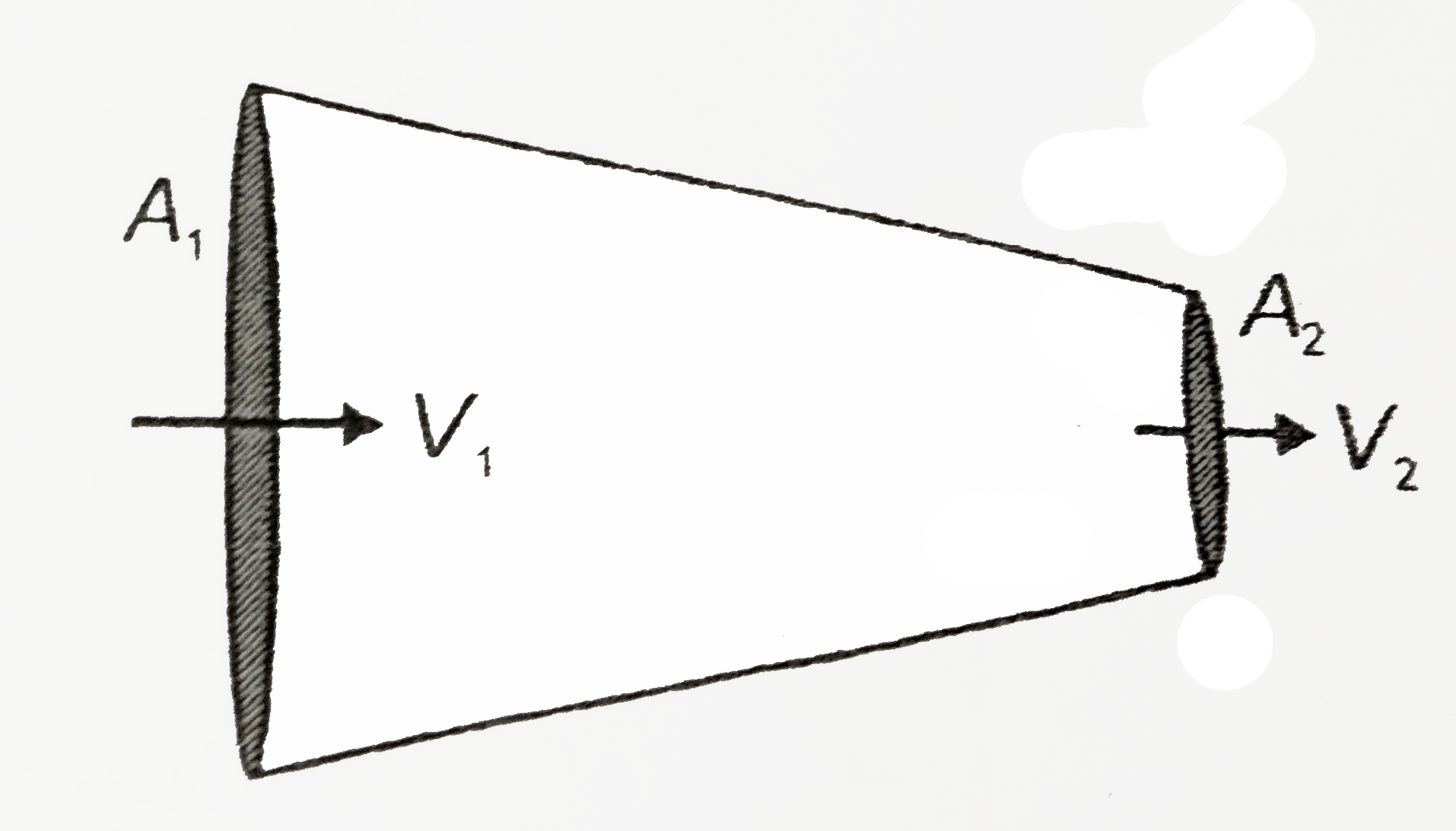Calculate the rate of flow of heat through a metal sheet 0.02 m thick and area 50×10−4m2 with its two sides at 273 K and 293 K respectively. Given K=0.2 cal cm−1s−1c−1.
The correct Answer is:420Js−1
To calculate the rate of flow of heat through a metal sheet, we can use the formula for thermal conduction:
Qt=k⋅A⋅(T2−T1)x
Where:
- Qt is the rate of heat flow (in Joules per second),
- k is the thermal conductivity (in Joules per meter per second per Kelvin),
- A is the area of the sheet (in square meters),
- T2 and T1 are the temperatures on either side of the sheet (in Kelvin),
- x is the thickness of the sheet (in meters).
Step 1: Convert the thermal conductivity from calories to Joules
Given:
- k=0.2cal cm−1s−1°C−1
We know:
- 1cal=4.184J
- 1cm=0.01m
Thus, we convert k:
k=0.2cal cm−1s−1°C−1=0.2×4.184J⋅(100)m−1s−1K−1
k=0.2×4.184×100=836.8J m−1s−1K−1
Step 2: Identify the values for the calculation
- Area A=50×10−4m2=0.005m2
- Thickness x=0.02m
- Temperature difference T2−T1=293K−273K=20K
Step 3: Substitute the values into the formula
Now we can substitute all the values into the formula:
Qt=836.8J m−1s−1K−1⋅0.005m2⋅20K0.02m
Step 4: Calculate the rate of heat flow
Calculating the numerator:
=836.8⋅0.005⋅20=83.68J
Now divide by the thickness:
Qt=83.680.02=4184J/s
Final Result
The rate of flow of heat through the metal sheet is:
Qt=4184J/s
- Qt is the rate of heat flow (in Joules per second),
- k is the thermal conductivity (in Joules per meter per second per Kelvin),
- A is the area of the sheet (in square meters),
- T2 and T1 are the temperatures on either side of the sheet (in Kelvin),
- x is the thickness of the sheet (in meters).
Given:
- k=0.2cal cm−1s−1°C−1
- 1cal=4.184J
- 1cm=0.01m
k=0.2cal cm−1s−1°C−1=0.2×4.184J⋅(100)m−1s−1K−1
k=0.2×4.184×100=836.8J m−1s−1K−1
- Area A=50×10−4m2=0.005m2
- Thickness x=0.02m
- Temperature difference T2−T1=293K−273K=20K
Now we can substitute all the values into the formula:
Qt=836.8J m−1s−1K−1⋅0.005m2⋅20K0.02m
Calculating the numerator:
=836.8⋅0.005⋅20=83.68J
Qt=83.680.02=4184J/s
The rate of flow of heat through the metal sheet is:
Qt=4184J/s
Topper's Solved these Questions
- THERMAL CONDUCTIONBOOK - ICSECHAPTER - THERMAL CONDUCTIONEXERCISE - SELECTED PROBLEMS (Taken from the Previous Years ISC, AISSCE, HSSCE various States. Boards Roorke Qns & NCERT text) FROM MASS OF ICE MELTED
17 Videos
- THERMAL CONDUCTIONBOOK - ICSECHAPTER - THERMAL CONDUCTIONEXERCISE - SELECTED PROBLEMS (Taken from the Previous Years ISC, AISSCE, HSSCE various States. Boards Roorke Qns & NCERT text) FROM THE RATE OF INCREASE OF THICKNESS OF ICE ON A LAKE
3 Videos
- THERMAL CONDUCTIONBOOK - ICSECHAPTER - THERMAL CONDUCTIONEXERCISE - VERY SHORT ANSWER QUESTIONS
5 Videos
- SELF ASSESSMENT PAPER 5BOOK - ICSECHAPTER - SELF ASSESSMENT PAPER 5EXERCISE - Section-D
6 Videos
- THERMAL RADIATION BOOK - ICSECHAPTER - THERMAL RADIATION EXERCISE - SELECTED PROBLEMS (from WIEN.S DISPLACEMENT LAW)
14 Videos
Similar Questions
The opposite faces of a cubical block of iron of cross-section 4×10−4m2 are kept in contact with steam and melting ice. Calculating the amount of ice melted at the end of 5 minutes. Given K=0.2 cal cm −1s−1°C−1.
View SolutionCalculate the degree of hydrolysis of 0.1 M solution of acetate at 298 k.
Given : Ka=1.8×10−5
View SolutionCalculate the rate of increment of the thickness of ice layer on a lake when thickness of ice is 10 cm and the air temperature is −5∘C. If thermal conductivity of ice is 0.008 cal cm−1s−1°C−1, density of ice is 0.91×103kg m−3 and latent heat is 79.8 cal gm−1. How long will it take the layer to become 10.1 cm ?
View SolutionCalculate the difference in temperature between two sides of an iron plate 20 m m thick, when heat is conducted at the rate of 6×105 cal/min/m2. K for metal is 0.2 cals−1cm−1.∘C−1
View SolutionCalculate the rate of reaction for the change 2A→Products, when rate constant of the reaction is 2.1×10−5 time −1 and [A] 0 =0.2 M.
View SolutionA cylindrical metallic rod 0.5 m long conduct heat at the rate of 50Js−1 when its ends are kept a 400∘Cand0∘C respectively. Coefficient of thermal conductivity of metal is 72Wm−1K−1. What is the diameter of rod?
View SolutionCalculate the rate of flow of glycerine of density 1.20 ×103kg/m3 through the conical section of a pipe. If the radii of its ends are 0.1 m and 0.02 m and the pressure drop across the length is 10 Nm2.

View SolutionThe rate constants of a reaction at 500 K and 700 K are 0.02s−1 and 0.07s−1 respectively. Calculate the values of Ea and A.
View SolutionThe rate constants of a reaction at 500 K and 700 K are 0.02s−1 and 0.07s−1 respectively. Calculate the values of Ea and A.
View SolutionThe rate constants of a reaction at 500 K and 700 K are 0.02s−1 and 0.07s−1 respectively. Calculate the values of Ea and A.
View Solution
